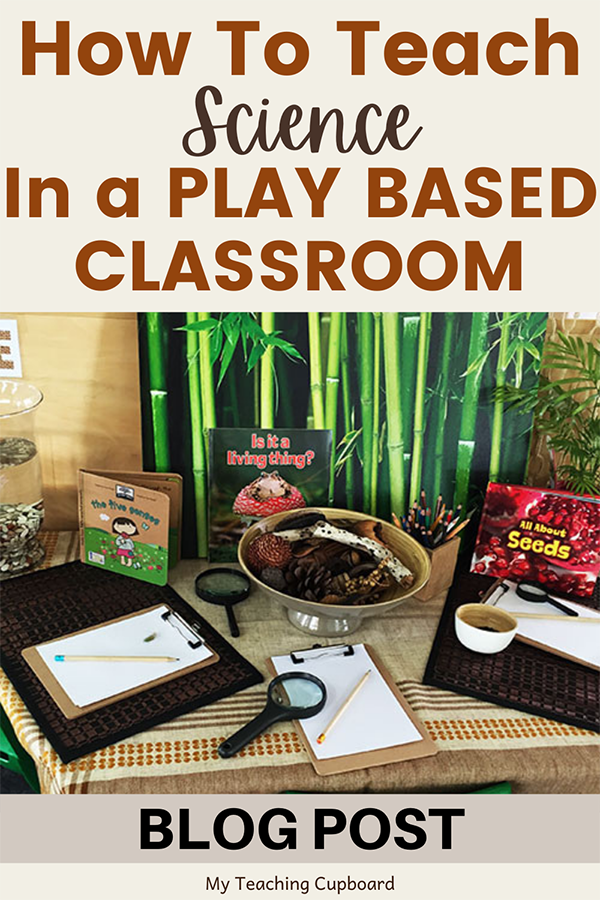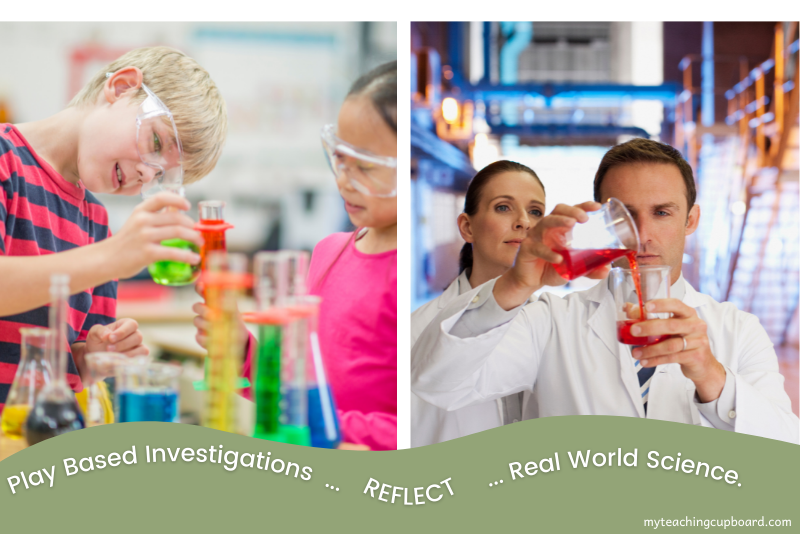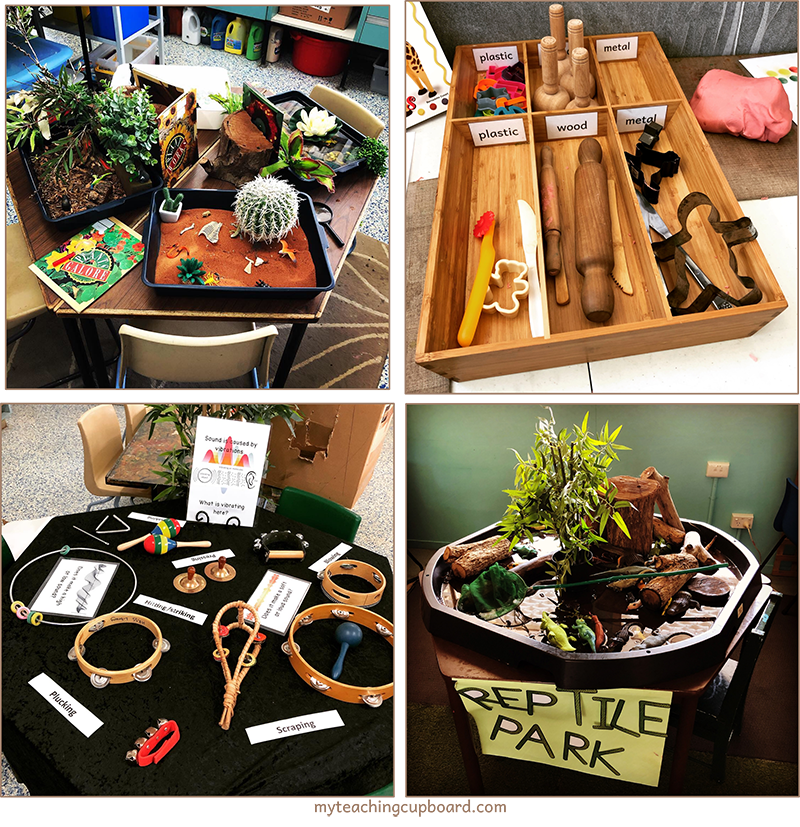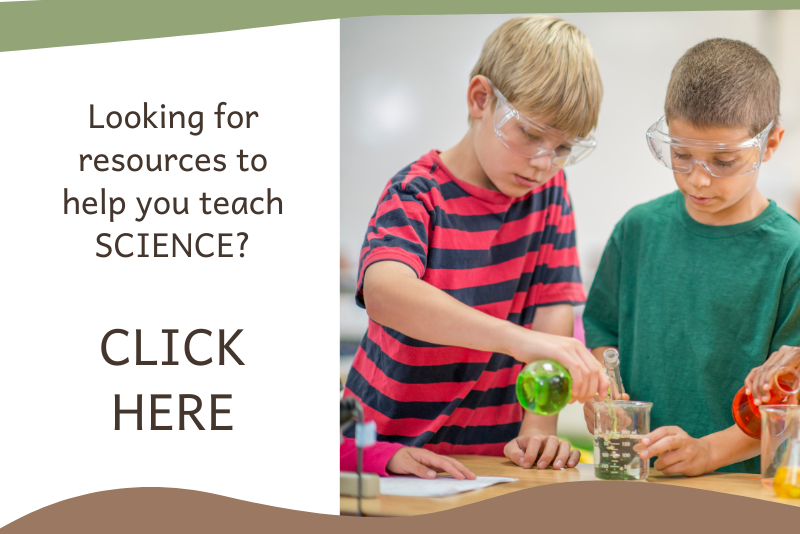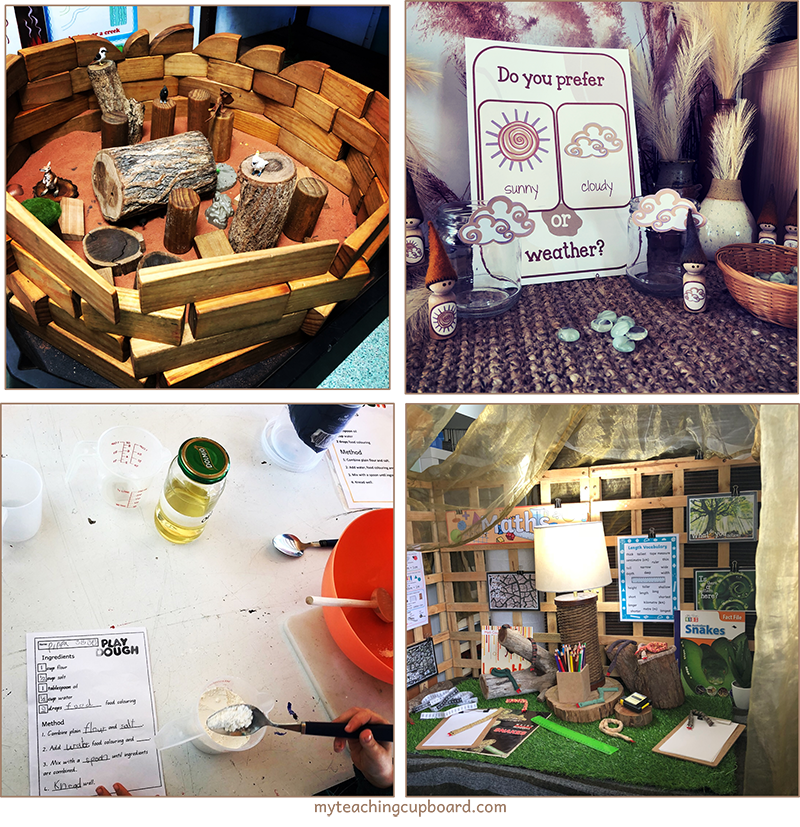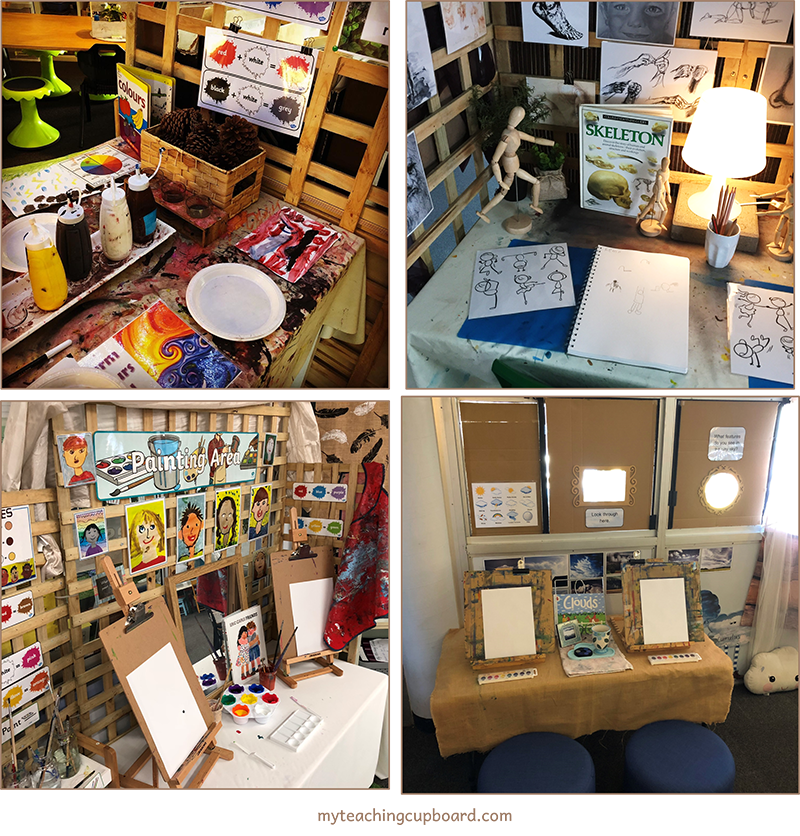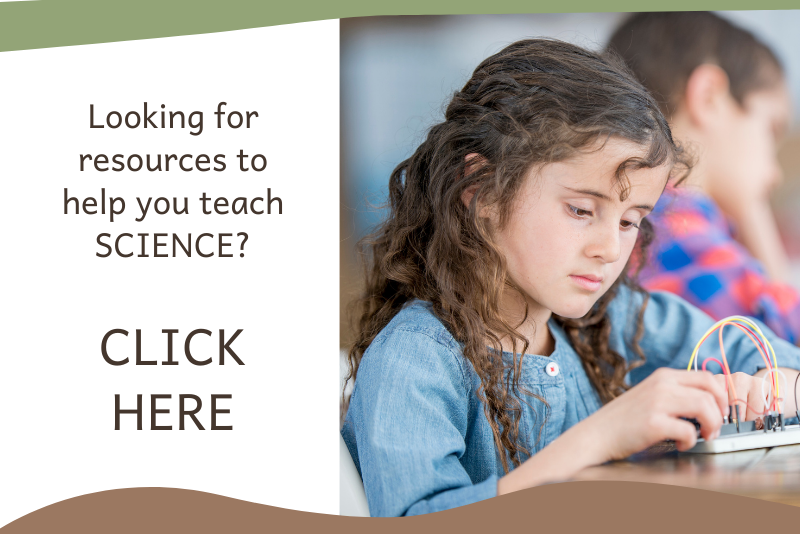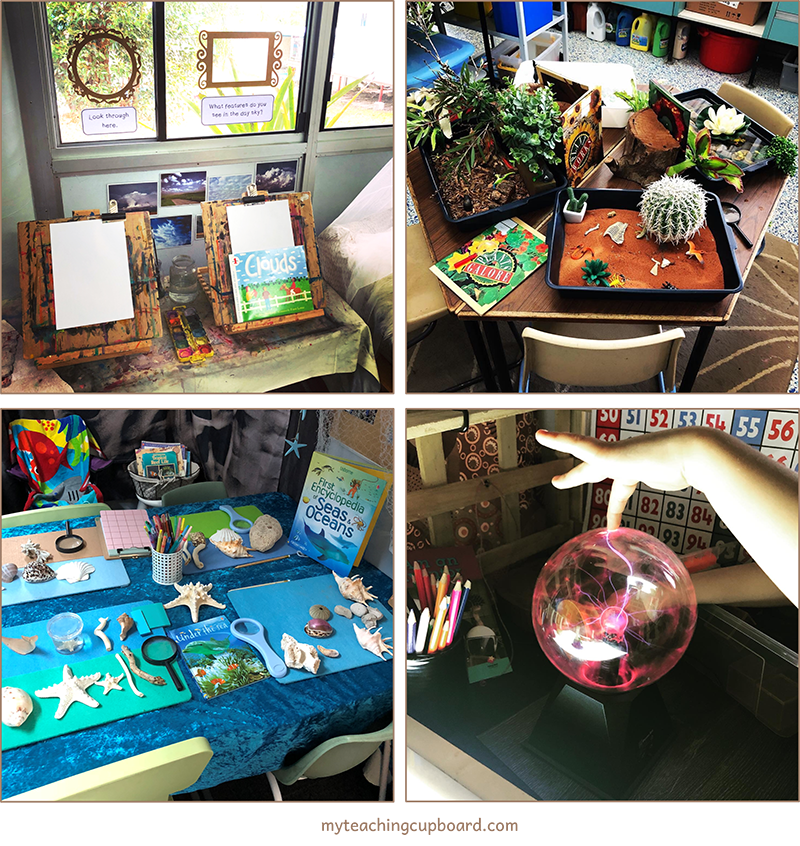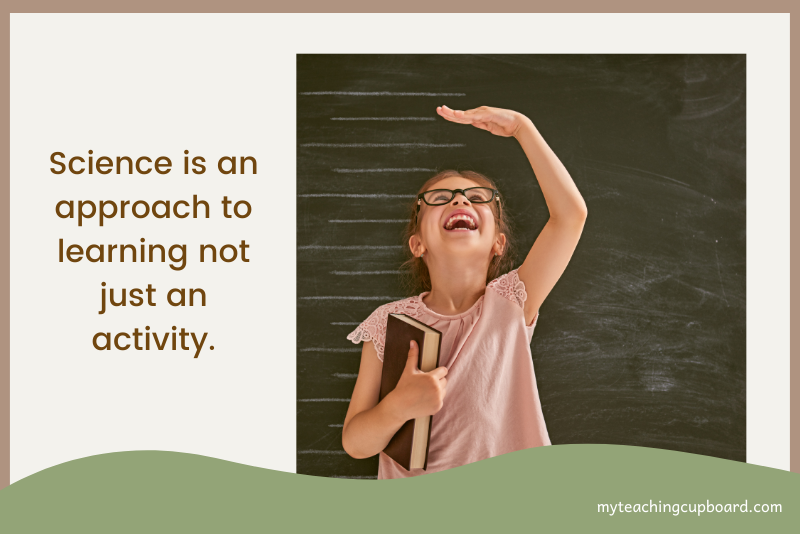Teaching Science in a Play Based Classroom
Teaching science in a play based classroom is one of the easiest things you will ever do as a classroom teacher. In this blog post you will discover how play based learning and science education go hand-in-hand. I’ll also give you some play based science ideas you can implement in your own classroom.
The young children you teach are naturally curious and inquisitive. As a teacher in a play-based learning environment, it is easy to harness this curiosity to develop their knowledge and understandings of science concepts.
In a play based classroom, learning science is a natural consequence of all the activities and experiences children engage in. As your children explore the classroom investigation areas, they will learn scientific skills and concepts. Just like real scientists, they will learn by interacting with others and the world around them.
Your play-based learning invitations will invite children to explore, question and develop as scientific learners.
Read on to discover the elements of science you are already teaching in the developmentally appropriate play experiences you are offering in your early childhood setting.
Emphasize the Scientific Nature of Play
Play based learning is scientific by nature. In a play based classroom your scientific learning intentions and specific science curriculum content does not need to be taught in isolation.
In a play based, investigative classroom, science is already integrated into the investigation sessions. If you are implementing a play based learning pedagogy, you are already teaching science. It is already happening because the investigative activities and experiences you are providing have their foundation in Science.
To effectively teach science in a play based learning classroom, you just need to emphasize the scientific nature of the play-based experiences you provide. As you interact with the children throughout your investigation and reflection sessions, discuss the scientific inquiry skills you observed.
Explain to your children the connections between their play based investigations and how they are developing inquiry skills just like those used by real world scientists.
Discuss and build science understandings and skills by connecting your current science curriculum learning intentions to the activities and experiences offered and explored during investigations.
Teaching Science Inquiry Skills through Play
The essential science inquiry skills of predicting, exploring, observing, reporting and communicating happen naturally through carefully designed learning invitations and investigative play sessions.
Science is the process of understanding the world (Peterson & French, 2008) and should be seen as a way of approaching an activity, not just as the activity itself (Conezio & French, 2002).
When we teach science and inquiry skills, it is not just about doing experiments and taking part in scientific activities like investigative play. The discussions around your scientific activities and the metalanguage you use are very important too.
The learning invitations you offer your children should act as the catalyst for discussions around scientific thinking and learning. Your learning invitations need to be designed in a way which allows your children to mirror and connect to the way real scientists work.
Science inquiry skills are a fundamental part of the Australian Curriculum. The development of these skills will happen naturally when you design learning invitations with the science curriculum in mind.
The Australian Curriculum Science Inquiry Skills strand has four main descriptors:
Pose and respond to questions about familiar objects and events [ACSIS014].
Participate in guided investigations and make observations using the senses [ACSIS011].
Engage in discussions about observations and represent ideas [ACSIS233].
Share observations and ideas [ACSIS012].
Adopt the Reggio Philosophy to Teach Science
When considering how you are going to teach science in your play based classroom, it is worth exploring the Reggio learning philosophy. The Reggio Emilia Approach is a child-centered pedagogy which has been labelled by some as the best early childhood education model in the world.
In a Reggio classroom, learning is viewed as a collaboration between the teacher, the children and the environment. The classroom participants explore their environment together. They construct their knowledge and understandings together.
If you are interested in teaching science through play based learning, the Reggio philosophy is an ideal pedagogy for developing age appropriate science skills and understandings.
Reggio learning environments rely heavily on learning provocations or invitations to learn. They use these learning invitations as a way to provoke engagement and thinking.
You will discover Reggio inspired learning provocations are the perfect way to teach your science curriculum learning intentions. They will also provide your children with a multi-sensory learning experience and help them to develop and represent their thinking in an age-appropriate way.
Learning is integrated and interconnected in Reggio classrooms. The connections between the classroom participants and their environment are central to the Reggio Emilia pedagogy. The connection between people and their world is also a central theme in the field of science.
Science Based Learning Invitations
When you are planning learning invitations which will encourage your children to mirror and connect to the way real scientists work, you first need to refer to your curriculum learning outcomes.
In Foundation, students observe and describe the behaviours and properties of everyday objects, materials and living things. They explore change in the world around them, including changes that impact on them, such as the weather, and changes they can effect, such as making things move or change shape. They learn that seeking answers to questions they pose and making observations is a core part of science and use their senses to gather different types of information.
In Year 1, students infer simple cause-and-effect relationships from their observations and experiences, and begin to link events and phenomena with observable effects and to ask questions. They observe changes that can be large or small and happen quickly or slowly. They explore the properties of familiar objects and phenomena, identifying similarities and differences. Students begin to value counting as a means of comparing observations, and are introduced to ways of organising their observations.
In Year 2, students describe the components of simple systems, such as stationary objects subjected to pushes or pulls, or combinations of materials, and show how objects and materials interact through direct manipulation. They observe patterns of growth and change in living things, and describe patterns and make predictions. They explore the use of resources from Earth and are introduced to the idea of the flow of matter when considering how water is used. They use counting and informal measurements to make and compare observations and begin to recognise that organising these observations in tables makes it easier to show patterns.
When designing your science based learning invitations, consider your science curriculum learning outcomes and what experiences your children need in order to succeed with the related assessment criteria. Plan and design learning invitations that will support and link to your science curriculum.
Here are some play-based learning examples hands-on provocations to get you started:
Science and Literacy Areas – Reading Area & Writing Table
Science is not something that needs to be taught in isolation from other learning areas. Using science as the central unit to develop knowledge and skills in other domains recognises that young children are holistic learners (French, 2004) and provides scope for children to develop their understandings of the world around them. For instance, there is value in setting science activities within the context of a story (Cavendish, Stopps & Ryan, 2006). Through listening to a story, children can gain an understanding of the purpose and reason for an investigation, and a story can help children become more engaged. Early Years Science and Integration
Science and the Math Table
Science and mathematics share many common ideas and skills that can be developed in the early years. These include measurement, number patterns, sorting and classification of objects and forming groups based on common characteristics. Inquiry-based science and mathematics activities can allow educators to effectively integrate mathematics and science so children can learn that both mathematics and science involve, for example, discovering patterns and relationships (Saçkes, 2013). Mathematics and science understandings can be introduced through young students exploring their world (Gallenstein, 2005). Early Years Science and Integration
Science and Block Play
There are many ways to increase scientific skills and knowledge by playing with blocks. Playing with blocks can increase the ability to use observation, guessing and comparison. Block play can also lead to increased understanding of gravity, weight and balance. As you use blocks to play with your children, it is essential to be aware of some important and fun questions you can ask to support their learning and increasing of scientific skills. Questions in block play can support scientific learning
Science and Sensory Play
Sensory-based inquiry naturally teaches children to use the scientific process. During sensory play, children learn the value of close observation. During sensory play, children may notice the different textures, sizes, shapes, and colors of the objects they are manipulating. Children can also observe the effects of gravity on different objects, noting that larger blocks usually feel heavier, for instance. Sensory Science: Connecting Children’s Science Learning to their Sensory Play
Sensory play also teaches children to solve problems. Children may begin to wonder and investigate:
· How can I build a tower that doesn’t fall?
· Which objects float and which objects sink in water?
· What happens if I hold this ice cube tightly?
· What happens when I add water to sand?
· What happens when I add blocks to my boat?
These investigations during play are instrumental in developing a child’s ability to understand cause and effect. Sensory Science: Connecting Children’s Science Learning to their Sensory Play
Science and Art
Strengthen children's observation and scientific skills by having them observe their artwork and the artwork of others. Make a small frame of construction paper, and use it to frame parts of children's paintings and artwork. Place the frame over a part of a painting, and talk about the colors, shapes, or design within the borders. Carefully think about the words you use to talk about art. Instead of saying, "That's a lovely painting," try describing children's artwork using scientific terms. Teaching Science Through the Visual Arts and Music
Describe different colors children use. Some colors-yellow, red, and blue-are primary colors. They cannot be created by mixing other colors together; but primary colors can be mixed together to create other hues. Encourage children to explore and experiment with mixing colors. What will they discover? What shades and tones of green are created by mixing different amounts of yellow or blue? Some supplies like paper, will be transparent; you'll be able to see another color underneath them. Others are opaque, and you won't be able to see paper or paint beneath them. Teaching Science Through the Visual Arts and Music
Science and Dramatic Play
Dramatic play lends itself to exploring science as a human endeavour. Setting up dramatic play spaces related to the science unit you are currently studying in class will help you to teach and reinforce your science curriculum objectives.
LIVING THINGS
Nature and Science Tables
Of course, setting up science specific learning invitations and investigation areas directly related to your science curriculum learning intentions is a fantastic way to teach science in a play based classroom.
Now that you understand how science is already a big part of your play based classroom, it will be so easy for you to teach scientific skills and understandings. Remember to recognise and discuss the science already present in your play based classroom.
If you liked this blog post on teaching science in a play based classroom, please consider sharing it...
Just CLICK the sharing box below.👇

